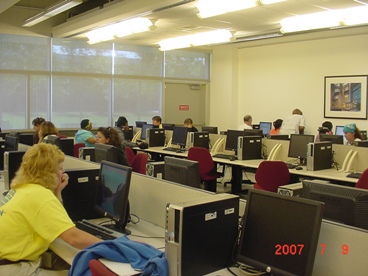
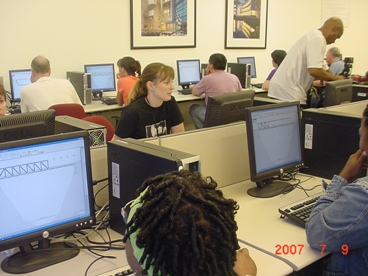
Dr. R.A. Dusseau, Chair of Civil and Environmental Engineering conducted a Bridge module for the participants. This included having participants construct different types of bridges using Jenga blocks and a Computer software the Bridge Builder to design a truss bridge. Participants were presented with an individual Jenga block set for instructional purposes in their classrooms.
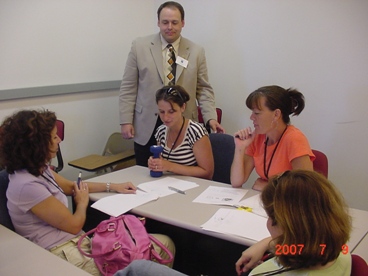
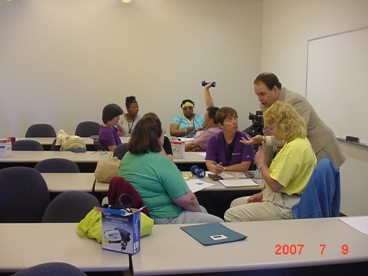
Dr. J. Newell, Professor of Chemical Engineering offered a “Hands on the Human Body” clinic module. When most people think of engineering, the human body usually is not the first thing that comes to mind, but the systems of the body can be used to demonstrate engineering principles from all of the major disciplines. Dr. Newell demonstrated via simple experiments using the human muscles the concepts of levers and force balances which are very common in Physics. He also used blood pressure monitors and the human heart to demonstrate concepts of hydrostatic pressure in a fluid flow system.
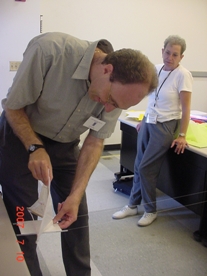
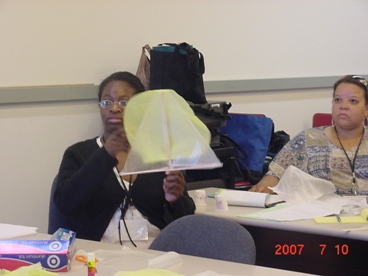
Dr. Kevin Dahm - Alternate Energy
Dr. Kevin Dahm gave a session on harnessing wind energy, adapted from an Engineering is Elementary module called “Catching the Wind.” The session started with a hands-on activity on making sails. The participants built sails out of such materials as wax paper, tissue paper, aluminum foil, popsicle sticks and drinking straws to catch the wind from a window fan and power a small foam raft. The session also included a discussion on the engineering principles illustrated by the experiment, the technical challenges involved in large-scale wind farming, and the way the problem relates to various science and engineering disciplines.
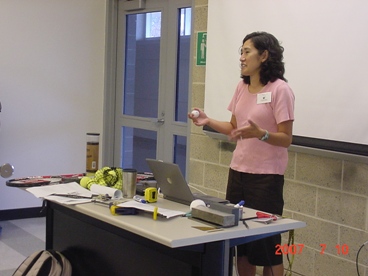
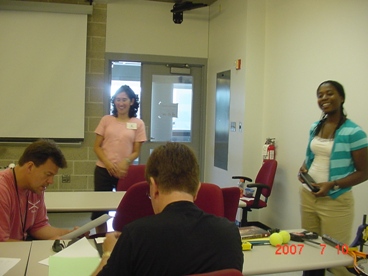
Dr. Jennifer Kadlowec- Sports and Engineering
Jennifer Kadlowec led a session on the physics of tennis, which is part of an NSF CCLI project "Team Play! Engineering Principles in Sports." The session started with a hands-on activity to determine a sweetspot of a tennis racquet. The participants clamped the handle of a racquet to a table, dropped a tennis ball on various positions of the racquet face and determined the position where the return height of the ball bounce was greatest, thus determining a sweet spot. The session also included a discussion on science and engineering principles illustrated by the experiment, other demonstrations with sporting balls to illustrate energy principles and discussions among the teachers about other resources and demonstration ideas related to sports.